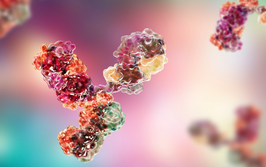Integrated Expertise
Experts from Lonza share how the biologics and CGT manufacturing sectors can learn to recognize the gaps and similarities that can be utilized to optimize cell culture media challenges.
| 7 min read | Interview

Credit: Original image from AdobeStock.com
The biologics industry has well-defined processes and efficient manufacturing, while cell and gene therapies (CGT) require a one-patient-per-batch approach that must be followed from raw material collection to delivery to the patient. There are a lot of differences, but there are also similarities.
Knowledge sharing between the fields could significantly improve CGT manufacturing efficiency, as well as overcome the challenges with cell culture media formulation. Lonza’s Alexis Bossie, Director of Media R&D, and Sanjay Kumar, Associate Director, Global Subject Matter Expert, CGT & Biologics Media, give their advice and thoughts on cell culture media.
What do biologics and CGT media manufacturing have in common?
SK: Both biologics and CGT media manufacturing must adhere to stringent cGMP regulations to ensure product quality, safety, and efficacy, and this cGMP expertise can usually seamlessly transfer one modality to another in terms of aspects such as regulatory compliance for production. To assist with cGMP, there has been a shift of focus to chemically defined media wherever possible because it’s easier to scale as production volumes increase.
AB: While there is certainly overlap between the two, a crucial difference between biologics and CGT is the cell systems used. Biologics often deals with well-characterized production cell lines, while cell therapies frequently involve patient-derived cells that may or may not be genetically modified. Understanding these distinct cell types is important for developing appropriate manufacturing strategies, including the choice of medium and other critical components.
Although both processes require the highest levels of raw material quality, maintaining cell viability and specific cell functional attributes is crucial for cell therapies, whereas protein quality is most important for biologics. Established methods for media functionality testing can be adapted and refined for each specific CGT application, ensuring the cells receive the optimal environment to function effectively. For T cells, in addition to cell proliferation and robust viability, the medium must support the cell functions of cytokine secretion marker expression to indicate that the cells are not exhausted, that the population contains the desired subsets, and that the cells are still capable of killing the desired target.
What are the biggest obstacles to scaling up cell culture media?
SK: As production scales, ensuring consistent media quality becomes paramount. This requires robust quality control systems throughout the manufacturing process, spanning from raw material sourcing to final product packaging and QC testing. When it comes to process integration, optimizing media performance is intricately linked to the overall cell culture process. Understanding how media interacts with other process parameters, such as bioreactors and cell lines, is crucial for successful scale-up.
Then there are cost considerations, which I would say is one of the biggest challenges to media development. The drive to develop the best media formulation that maintains high cell growth, product titer, stability, and quality (correct protein folding, assembly, and glycosylation) at the lowest possible cost. At the same time, the scalability of the culture and its performance are important cost-determining factors, too. There is a definite trend towards developing fully chemically defined media formulations that have components that are of non-animal origin and are devoid of expensive components such as growth factors or hormones. Therefore, it is important to optimize the media such that the cultured cells exhibit robust growth, produce products at a high titer, and maintain high product quality and stability while being less dependent upon these expensive components.
AB: Balancing flexibility and speed to market are also significant obstacles to scale, particularly when outsourcing is involved. Customization offers significant benefits for clients, but it can introduce complexities during large-scale manufacturing. Developing media formulations tailored to specific cell lines or therapeutic needs requires a delicate balance between flexibility and scalability. There are ways to address this challenge using modular systems that simplify media preparation, lower the risk of component omission, and possess straightforward water reconstitution protocols, resulting in practical and efficient biologics manufacturing. These practices collectively contribute to a more streamlined, reliable, and effective media development process.
Time is also a critical factor in biopharmaceutical development. The ability to rapidly transition from media development to large-scale production significantly impacts a drug's time to market. Again, this can be addressed by employing well-established manufacturing processes and robust supply chains in a global network to ensure efficient production and rapid delivery of media to clients worldwide.
As beneficial as a standard platform is for cost saving and speed to market, there are instances where customizing a formulation will be necessary. For example, when the need is to produce an unstable protein product or to increase the frequency of a particular cell subset in a cell therapy, customization of the media is often necessary. From the initial discovery stages through to clinical and commercial application, high-quality ingredients and controlled processes are critical. Cutting corners by using non-GMP ingredients in the medium at the discovery stage will often result in the need to reformulate later as the therapy approaches the clinical stage, resulting in delays. Even when customizing a medium for a particular application, always pay attention to using only high-quality materials.
The Medicine Maker Presents:
Enjoying yourself? There's plenty more where that came from! Our weekly Newsletter brings you the most popular stories as they unfold, chosen by our fantastic Editorial team!
Is there a golden rule for choosing the right media?
SK: Best practices in media development should always have end users in mind. When choosing media, or an outsourcing partner for media development, look for simple-to-use products that simplify the manufacturing process of the final therapeutic, reduce the potential for errors, and increase efficiency. The development of media formulations that are stable over time is essential for maintaining consistent cell culture performance and product quality. Conducting appropriate shelf-life studies is also a key part of this process.
What key requirements should be considered?
AB: When developing a media formulation for a specific process, it is important to consider the distinction between the nutritional needs of primary cells and those of immortalized cell lines when designing a cell culture medium. Primary cells from human or other animal sources require serum, growth factors, and any other support that in vivo systems deliver. In vitro culture of primary cells will require all of these elements to be present in the culture medium. On the other hand, immortalized cell lines often are developed from their ability to propagate in the absence of high concentrations of serum, cytokines, or other growth factors in the culture media.
In cell therapy, where the cell is biotherapeutic, the requirement for serum, growth factors, and hormones may dictate inclusion into the media formulation. A difference between fed-batch and perfusion/continuous processing platforms can be the use of a base media with feeds versus a single media formulation, respectively. Fed-batch platforms often require feeds to keep cell growth, titer, or product quality high, whereas perfusion/continuous processing platforms require media formulations that will keep the cells at a steady state for longer periods of time once the desired growth to a critical mass is achieved while maintaining high product quality. Finally, the biotherapeutic products that the cells have been genetically engineered to produce may require different nutrients or different combinations of nutrients.
What does the future hold for cell culture media solutions?
AB: As automated culture methodologies become easier to use and more prevalent, the medium stability within these systems will have to increase and become integrated into new platforms. These platforms should be able to store fully prepared medium at refrigerator temperatures and automatically warm it before introducing it into the culture, and then monitoring consumption.
Cost reduction will be vital for cell therapies to be more broadly adopted worldwide, and reducing the cost of the cell culture medium will play a critical role in that evolution. Eventually, substituting small molecules in place of expensive growth factors or stimulating cells to produce their own autocrine factors will be a focus in the future. In addition, as T cell therapies advance to enable solid tumor treatments, whether by altering the receptors and integrating growth factors in ab T cells or through expanded use of gd T cells, the cell culture medium will need to be further developed to enhance the proliferation and survival of these and other T cell subsets.
Lastly, the future of antibody medicines, especially for biosimilars, will require greater control of post-translational modifications, which will be governed in part by specific changes to the cell culture media. All of these developments will accelerate over the next five to 10 years and will keep novel media development at the forefront of this science.



















